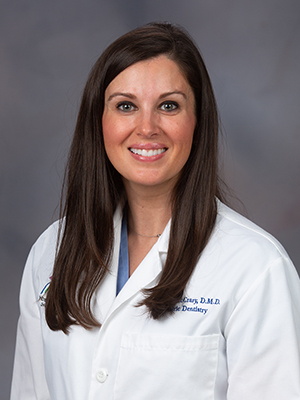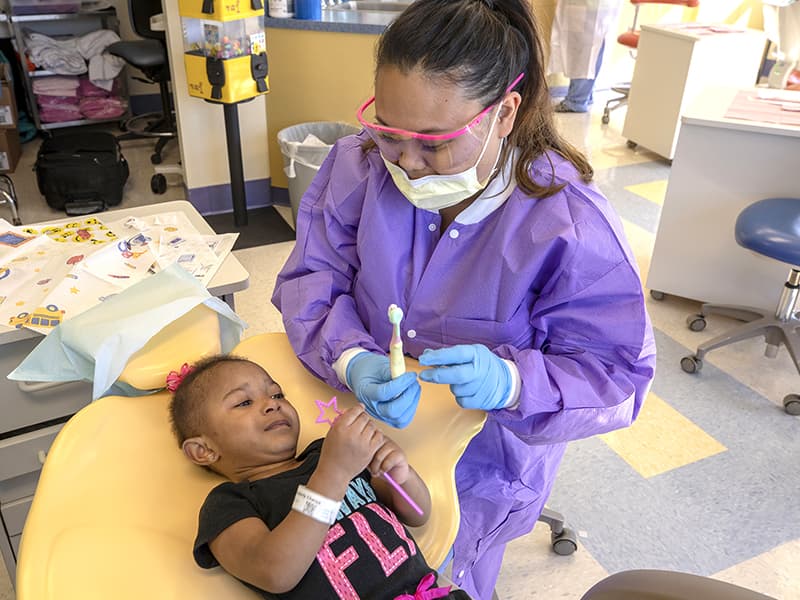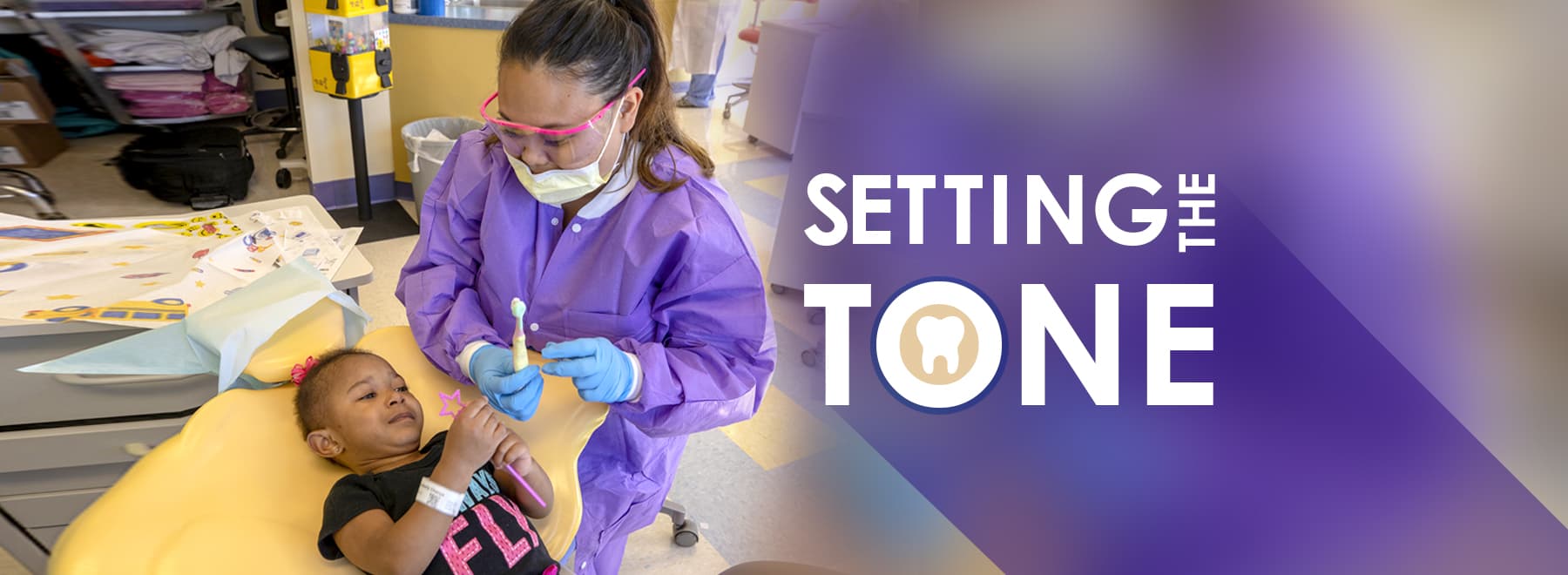Early dental exams can lead to lifetime of effective oral care
New parents have an overwhelming number of things to think about – and sometimes a trip to the dentist with their babies may not be high on the list.
But according to the American Academy of Pediatric Dentistry, a child should have his or her first dental examination within six months of the eruption of the first tooth and no later than 12 months of age.

Early dental care “sets the tone for a child’s future oral health,” said Dr. Sara Jane McCrary, assistant professor of dentistry at the University of Mississippi Medical Center. And a trip to the dentist within the recommended timeframe is the way to increase the chances that tone is a good one.
“This allows the patient to establish a ‘dental home’ in case treatment is needed or an emergency arises. It also gives the dentist or dental hygienist the opportunity to monitor effectiveness of home care,” McCrary said.
She said during a child’s initial visit, parents can usually expect the dental team to introduce their child to the dental equipment and perform an exam, clean his or her teeth and do a fluoride treatment, if needed. The dentist or hygienist also will explain to the parents how to clean the child’s teeth.
Dental caries, or tooth decay, is one of the most common chronic conditions of children in the United States, according to the Centers for Disease Control and Prevention.
“Risk for dental decay is established very early on in life for a number of reasons: number one, genetic; number two, microbial . . . and then diet,” said Dr. Christopher Hughes, UMMC chair of pediatric dentistry. “So that’s why the Academy (of Pediatric Dentistry) maybe 15 to 20 years ago really moved toward early assessment.”

Dr. Christopher Hughes takes another look at 2-year-old Timberly Collins' teeth in the pediatric dentistry clinic.
McCrary and Hughes point to studies that show about 20 to 30 percent of children have tooth decay by the time they reach kindergarten.
“Regular dental checkups and preventive care may reduce the number of cavities in young children, reduce the need for dental treatment and lead to healthier teeth," Hughes said.
In the pediatric dentistry office at UMMC on a Tuesday afternoon, Dr. Maureen Malingkas, first-year dental resident, performed an exam on 2-year-old Timberly Collins. Collins, who has a heart condition, was referred to UMMC by a dentist in Port Gibson to treat the cavities in her four front teeth.
After the exam, Malingkas gave Collins’ parents a few pointers on taking care of their daughter’s teeth. She emphasized teeth brushing and demonstrated a technique called “knee to knee,” where the parents sit with one another’s knees touching. The child then sits on one parent’s lap and leans his or her head back in the other parent’s lap so that parent can brush his or her teeth.

Dr. Maureen Malingkas, first-year dental resident, shows Timberly Collins' parents, Timothy Collins and Ebony Porter, the "knee to knee" technique that can make brushing young children's teeth easier.
Malingkas also suggested diluting juice with water, which cuts down on sugar exposure. And if the parents are in a tight spot and can’t brush their child’s teeth, Malingkas said another trick works well: Wiping the child's teeth with a wet rag or cloth will get rid of plaque, she explained.
Other preventive therapies for infants include avoiding putting a baby to bed with a bottle and limiting sugary drinks and snacks. In addition, prolonged use of pacifiers and thumb sucking can cause movement of the teeth that could lead to the child needing braces later in life.
The need for earlier dental care in Mississippi is apparent. A 2013 survey of the oral health of Mississippi’s third graders revealed “a population in need,” according to the Mississippi State Department of Health. According to the MSDH, 63 percent of children had experienced at least one cavity, 31 percent currently had untreated tooth decay and 5 percent were in need of urgent dental care.

Malingkas gives 2-year-old Timberly Collins a pink toothbrush.
Good habits include teeth brushing twice a day with the appropriate amount of fluoridated toothpaste, according to the American Academy of Pediatric Dentistry. For children under 2 years of age, only a smear of toothpaste should be used; for children 3 and older, a pea-sized amount of toothpaste is recommended, according to general guidelines.
Using fluoridated toothpaste is an important distinction, McCrary said.
“Fluoride has been a major factor in the decline in prevalence and severity of dental caries in the United States,” she explained.
To make an appointment for a child with the Department of Pediatric Dentistry at UMMC, call (601) 984-6100.



